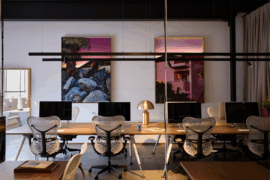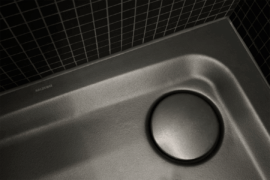Haworth is applying a new vision for its Asia Pacific showrooms, and in the process, providing a physical representation of its ‘organic workspaces’ strategy.

Haworth, Japan
January 12th, 2017
In the Asia Pacific region, the conception of the furniture or product showroom as a static container for display has been increasingly challenged and overcome in recent years. Today’s most progressive showrooms are locations as desirable as those where a brand’s products will end up after a sale. The region’s best showroom spaces are experiential centres for learning rather than mere backdrops for transaction – places with their own identifiable presence.
Haworth is unveiling a holistic new vision in its Asia Pacific showrooms that not only supports its product offering, but that provides a physical representation of its ‘organic workspaces’ strategy for workplace design. More than demonstrating Haworth’s principles to its customer base, the showrooms also support Haworth team members in their own day-to-day work, thus serving as workplace testing grounds as much as showcases of the Haworth product portfolio.
“The vision for Haworth showrooms in Asia Pacific is to have a platform for us to create a consistent brand experience. Through the physical demonstration of organic workspace strategy, we want to achieve a strong local presence and an inspiring space,” says Liz Teh, Haworth’s Head of Design in Asia Pacific.
She continues, “We use these spaces to show our design point of view, our place research, and our knowledge. By understanding work styles, workspaces and culture, we are able to take a perspective on shaping the work environments we are in. And in turn, we can share this learning on space, products and wellness with our customers.”
There are a number of core foundation elements considered when Haworth creates a showroom experience. The first of these is the spatial experience. The showroom is thought of as a seamless experiential space with a variety of zones where customers can encounter products in different settings and where team members can move around throughout the day to suit their work activities. Spaces in which to think (for concentrated work), see (for showcasing products), do (for heads-down work on tasks) and connect (for interactions) are defined in accordance with Haworth’s ‘Competing Values Framework’.
A layer of local specificity is applied to provide inspiration and a means of connection. Says Teh, “It’s important for us to reflect the local culture and history with artefacts that are locally sourced.” Traditional craftsmanship, local painting and photography styles, and locally sourced curios are part of the showroom experience.
The second foundation element that determines the showroom experience is consideration of trends. The drivers of design innovation in today’s workplaces are taken into account for the development of each showroom.
Thirdly, wellness is given due consideration. “Where we work plays an important role in how well we perform.” Teh adds, “Our work environment is a major influencer of human behaviour, so when we design Haworth offices, we consider designing for wellness in a holistic way. This means considering all aspects that a human needs to do meaningful and productive work.”
The fourth foundation element is technology, and in Haworth’s view there are three main categories of technology to be considered for the company’s own showrooms and for workplaces in general: collaborative technologies (that support communication between multiple people), informative technologies (that collect and track data – including Haworth Analytics), and mobilisation technologies (that increase and support the mobilisation of a workforce). These technologies are applied as needed to suit the Haworth teams in each location.
But the core approach to planning the Haworth showroom spaces, suggests Teh, is to recognise the need for consistent change. “The future of the workspace is in its flexibility to adapt to evolving work styles, cultures and innovation in products.” And in that regard, Haworth’s APAC showrooms are an avenue for constant learning as much as a demonstration of the latest products and thinking.
INDESIGN is on instagram
Follow @indesignlive
A searchable and comprehensive guide for specifying leading products and their suppliers
Keep up to date with the latest and greatest from our industry BFF's!

A longstanding partnership turns a historic city into a hub for emerging talent

London-based design duo Raw Edges have joined forces with Established & Sons and Tongue & Groove to introduce Wall to Wall – a hand-stained, “living collection” that transforms parquet flooring into a canvas of colour, pattern, and possibility.

For Aidan Mawhinney, the secret ingredient to Living Edge’s success “comes down to people, product and place.” As the brand celebrates a significant 25-year milestone, it’s that commitment to authentic, sustainable design – and the people behind it all – that continues to anchor its legacy.

The workplace strategist and environmental psychologist was in Sydney earlier this year to give a talk at Haworth on the fallacies of the ‘average’ in workplace design.

The Director of Space Design for Haworth International for Asia and Europe tells us all about her global design journey.
The internet never sleeps! Here's the stuff you might have missed

With a minimalist aesthetic and an inventive approach to product, ZETR is challenging the way electrical accessories are designed, made and experienced.

Overlooking Berlin Zoo, the suites of the 25hours Hotel Bikini Berlin curate the sustainability ethos in an entirely unique and dynamic aesthetic. Think natural fabrics and materials, jewel-hued colours, curves and cushions, spa-like bathrooms and hammocks with views over urban greenery.